Catching Up! | Curation, Vibe Coding and New Priorities for Education
Key Points
-
The future workplace will value curiosity, curation, and judgment over mere knowledge acquisition. Schools should focus on fostering these skills.
-
There is a need for more real-world experiences in education to prepare students effectively for the demands of the modern workforce.
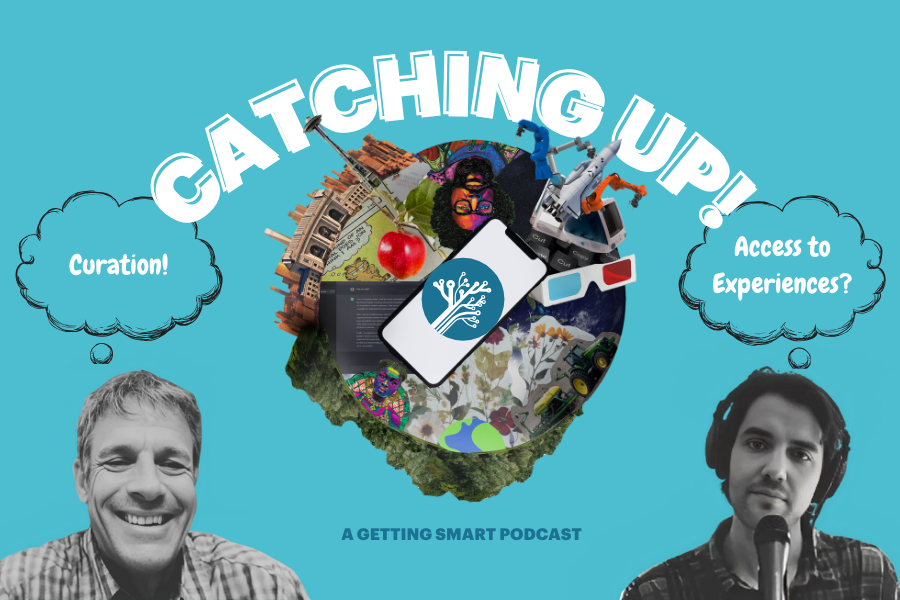
In this episode of “Catching Up!”, Mason and Nate dive into the evolving landscape of education, focusing on how vibe coding is a signal of how curiosity, curation and judgment are increasingly critical learning priorities. They explore the shifting dynamics of computer science education in the age of AI and highlight the importance of fostering experience-based learning opportunities across diverse educational geographies. From looking in unlikely places (like”Italian brain rot”) to the challenges of expanding CTE programs in rural areas, this episode covers an array of thought-provoking topics. The hosts also discuss the role of curation in both digital and physical spaces, emphasizing its growing significance in the modern world. Tune in to discover insights and strategies for preparing students for a future where curiosity and creativity drive learning and innovation.
Check out past episodes here!
Outline
- (00:00) Introduction to Vibe Coding and Curiosity
- (01:53) Exploring AI and Vibe Coding
- (07:13) AI’s Impact on Research and Accuracy
- (10:34) The Rise of Curation in Digital and Physical Spaces
- (17:59) Deep Dive: Humans as Luxury Goods in the Age of AI
- (29:34) Tracking Fitness and Reflection Practices
- (33:13) AI and Learning Documentation
- (41:22) Rural vs. Urban Education Experiences
- (49:06) What’s That Song?
Introduction to Vibe Coding and Curiosity
Nate McClennen: We’re talking about vibe coding and the power of curiosity, curation, and judgment over knowledge. Then we dive into the differences in computer science programs between schools and geographies, especially around experience building and how to provide young people with more access to experiences.
Mason Pashia: I get a little bit excited in this episode about Nate bringing up curation… so we talk even more about curation, and I discuss something called Italian brain rot, which if you haven’t heard of it, good for you. Nate gives me 45 seconds to write a song. It’s not my best song, but it is original in the way an AI song is original. So, stay tuned.
Mason Pashia: Hey, Nate.
Nate McClennen: Hey, Mason, looking forward to catching up today.
Mason Pashia: I know, it feels like it’s been a bit this time. We are conveniently matching for our listeners, making it even harder to tell us apart. I think you’ve got a plant behind you in this new vantage, so you’re really coming for me.
Nate McClennen: A plant and some great early childhood art by my kids.
Mason Pashia: That one on the left is like, or I guess my left, your right, the dark blue one. So your right is pretty enticing.
Nate McClennen: One looks like a pheasant looking at the sun.
Mason Pashia: I was gonna say it looks like a crow in the evening.
Nate McClennen: Well, that’s pretty good. That’s good.
Mason Pashia: Well, it’s great to see you. I think it’s been a kind of wild week. I feel like I’ve had a brain focused on one thing and I’ve been seeing it everywhere. I think our listeners are gonna be able to tell that today a little bit. But what did you see this week? Let’s start with you.
Nate McClennen: You know, I was all over the place. My brain was not focused on any one thing, so maybe we’re the exact opposite. My news and openings are gonna be a little bit all over the place.
Exploring AI and Vibe Coding
Nate McClennen: I’ve been playing around with a platform called Replit. We’ll put it in the show notes, and some of our listeners might have heard about it. It’s an AI coding agent, and I’ve long been interested in how to take great ideas and put them into action quickly to create prototypes. I’ve done a few edtech solutions where we’ve had to wireframe them, either on pencil and paper or put them into a slide deck and then show what a clickable button would do.
In this case, I used Replit and just gave it a few lines of text, spending about three hours working through it. It gave me a fully functioning website after three hours with my monthly fee of $15. This idea of vibe coding, which I heard about afterward, is what I was doing. Vibe coding is just using normal language, not coding language, to create an actionable product. I think this is the future, and it allows ideas to come to fruition quickly. You can create a huge number of websites and try different prototypes and A/B testing without a whole lot of investment of coding time.
Nate McClennen: That led me to think about all these states, and I think it’s about 44 states now have computer science standards. If everybody’s learning coding, but then coding becomes obsolete because of vibe coding, what happens? That’s what my opening has been thinking about: Are we teaching the right thing, and is computer science really up to date? What are your thoughts on vibe coding?
Mason Pashia: Wow. I have so many questions. I mean, for a long time, I freelanced building websites for folks. I have some backend experience of websites, knowing all of the frustrations that a web developer can have. Partially with the impossible question of, “Can you make me a site that does this?” and you being like, “I think so, maybe.” Basically, is there a plugin that does that, or can I copy-paste that from somewhere? So Replit has just taken all of that off your hands. I do think it’s the future. I’m curious. I haven’t messed around with it. On the backend, would you have the ability to connect it to Stripe or a payment processing platform? How fully functioning can you make this as the front end of an interactive?
Nate McClennen: I was able to connect it to Getting Smart resources just by saying, “Go do a web crawl on the Getting Smart website and look for these keywords.” I don’t know how it APIs or something into another site, but I suspect that’s possible and it’ll ask for some sort of code to do that.
AI’s Impact on Research and Accuracy
Mason Pashia: On the same subject of AI, I’ve been messing around with the new O3 reasoning model from GPT, which, for anybody who’s not as in the AI world, is a new language model from OpenAI’s GPT. It thinks before it responds, so the response time is a little longer, but you can follow its whole logic train as to what it’s doing on the backend. It was pretty fantastic. I was really impressed with the results. I was giving it fairly opaque requests, like “Can you do a survey of these 15 United States learner wallets and audit whether students have ownership for life in there?” and also, “Can you take a look internationally and give me 10 more examples?” It would go do this thing that is hard information to find if you are a human being, knowing where to look. It was really impressive. These models are just getting really capable and letting you skip some of the steps that were super time-intensive but not very rewarding before.
Nate McClennen: Let me give you one more example then I have a pushback I’m gonna ask you. I was working for a partner and I had a list of 70 school districts. I wanted to know the data on free and reduced lunch, racial ethnic backgrounds, number of students, number of high schools, number of middle schools, number of elementary schools. I directed it to the NCES database, which is miraculously still alive at the federal government. I said, “Just go to this database, search for the school that’s in my list, and provide all this information and give it to me in a Google Sheet that I can then use.” It did it. That probably would’ve been either me or someone else about five hours of time. Suddenly I can get that work out of the way and do the analysis work and the curiosity and questioning work that I really wanted to get to. My question is, how do I check this? Because we know that things hallucinate still. It’s not perfect. I haven’t tested this yet, and I’m curious if you have thoughts on this. I was thinking, can you use another AI agent, another LLM from another company, and actually cross-reference it and say, “Can you check this database and see if that works?” I’m wondering if you’ve done that at all.
Mason Pashia: I’ve actually just resubmitted it back in the exact same feed and just said, “Do the same thing. Check this for accuracy,” and just seeing what it comes up with. If I’ve ever done that when I had doubt, it did catch the error on the upload again.
Nate McClennen: Interesting.
Mason Pashia: It was actually a little bit elaborated or like, “This is kind of an inference. It’s not overtly stated.”
Nate McClennen: Okay.
Mason Pashia: I will say the O3 one, when I pulled it, was fully correct. I cross-referenced a bunch of the things and I was very surprised. I think those layers of additional reasoning added a level of fact-checking. I don’t think that’s true for all of them, but I do think that would work if you have this truth bot that you can submit it back to or even in the same thing. If it doesn’t find the same thing twice, it’s very unlikely to hallucinate on the same thing two times looking at it from two different directions. It’s already feeling like the imagination is the limit of what you can do.
Nate McClennen: Right, which means we need to develop more imagination and curiosity. What else did you see this week that you’re interested in?
The Rise of Curation in Digital and Physical Spaces
Mason Pashia: My thing that I’m just seeing everywhere is this idea of curation. It’s always been one of my favorite topics ever since making a mixtape for people or maybe a mixed playlist given what technologies I came up with. There’s an abundance out there. How do you curate a handful of things to tell a specific story that you’re wanting to tell? I saw a few things this week that made me think of it, and then we’re gonna talk even more later about it. One of them. I have a friend who is painfully online. He can tell you all of the weird deep lore of the internet. There’s this thing right now called Italian brain rot, which is a whole sub-genre of fictional AI-generated characters that only exist like in social media reels basically. Instagram reels, which is like their TikTok version. He follows this person named Taylor Lorenz, who’s kind of like the generation alpha, gen Z whisperer for The New York Times. Taylor Lorenz is always doing these very intelligent thoughts about dumb things. That’s kind of her MO. He sent me this thing about Italian brain rot and I just want to get your knee jerk. Mine was a certain way. Basically, there are all of these AI-generated characters that now have Instagram accounts. One of them is named John Pork. It’s a man with a pig head. There’s one called Tralalero Tralala, which is an Italian shark that’s wearing sneakers and they’ve come from all of these people. They have these profiles, but basically, people are creating these stories about them. Over time, based on engagement, it will dictate which of the characters survive in the cultural eye. Now all of those people have been imprisoned by the police in a fictional storyline that is driving millions of hits. It’s a fully co-curated story. If you want to tell the next phase of Tralalero’s chapter, you can do it. But if you don’t get enough likes to keep it high up in the list, that didn’t actually happen to Tralalero. I’m so fascinated by this as an emerging curation and storytelling trend.
Nate McClennen: I have a lot of questions, Mason. I have a lot of questions.
Mason Pashia: I have a lot of questions for my friend as well. It’s fascinating.
Nate McClennen: First of all, I looked it up, Italian brain rot, famous characters, and I see Adobe. It’s in Walmart, so it must be selling on something, and it’s a frog embedded in a tire. Some sort of shark sneaker person that you talked about. This gorilla banana guy keeps showing up over and over again. It’s a green gorilla in a yellow banana and then a teacup woman. It looks like a latte head or something like that. This is crazy and a little bit ludicrous. Connect me again to the curation.
Mason Pashia: I’ve broken the storyline of fake characters, I think. It’s co-curation in the sense that nobody has IP. It’s all fictional AI made. Everyone’s invited in. It’s really just this strange world where the story ends based on how people want the story to end, which is a kind of weird new way to interface entertainment. As someone who loves stories and is really interested in entertainment and art, it just struck me as super strange. If students are gonna come in knowing how to do this kind of thing, similar to your AI question, it’s like reading this old book, which I love to do. That’s just gonna feel so alien to them. Why can’t we just make this story? Why can’t we have this story go in new directions?
Nate McClennen: Right. That agency and control, you know, we’ve talked a lot about learner agency, learner-centered, and even a learner-driven curriculum that’s catching and hitting all the standards and outcomes and competencies that are needed. But this takes it even a step further where you’re creating storylines and upvoting and downvoting. I think you’re onto something that we probably need to continue to think about, which is this increasing gap between the lived experience of young people and what they’re learning in school. This has always been the case. This is not only now, but it feels like the gap is accelerating more and more and more. Wow. Okay. That’s crazy.
Mason Pashia: It’s absolutely wild. I don’t know if I encourage anyone to go Google Italian brain rot, but if you do, don’t tell them Mason sent you and you’ll get at least a laugh out of some of the things. On the other piece of this curation front, the first of many today, I just saw an article in The New York Times this week sort of on the opposite side of the spectrum, which is that the MoMA in New York is one of many museums that is actually decreasing the amount of years of experience you need in order to become a curator. They’re trying to get more young people in to curate the collections they have. They dropped it from 14 years of experience to 10 years of experience. That just stood out to me for a lot of reasons. Last week we talked a little bit about early education and the way that they’re trying to make that age bracket lower in certain states. Drop it from 16 years to 14 years, which we both sort of were like interesting, with a raised eyebrow of “tell me more.” Then we see this thing that Ryan Craig talks about a lot in our work about the experience gap. It’s gonna be really hard to find that first job. It’s just gonna be asking for more and more experience. AI will take a lot of those entry-level roles. So where do people actually get their foot in the door? I just found them as interesting inverse trends. I’m generally pro, like we should have younger curators. We need museums to be places of belonging for all people. It just stood out to me.
Nate McClennen: It makes me think we talked about how young people are, from an early age, curating. They’re getting a lot of experience in curation, like you were saying. The skill of curation, I can understand what MoMA is doing. They’re saying, “Hey, you have more experience than some of our 30-year veterans in this curation department.” They don’t necessarily have experience in whatever, discerning what art goes where or whatever the case may be. That’s an interesting choice to tap into and recognize that there is a skill that perhaps the younger generation has that older generations don’t.
Mason Pashia: It’s really interesting because it is so subjective. If you put the picture behind you of the crow or whomever in the daylight or moonlight up next to a Monet or a Basquiat in a museum or the banana taped to the wall. Exactly. You’ve curated that to tell some sort of experience, whatever that is. All of the paintings mean something a little different within the context that you set for them.
Nate McClennen: Sure.
Mason Pashia: It’s a really interesting way to tell stories, kind of meanings of works. Interesting trend.
Nate McClennen: Yeah. It’s a great segue into our deep dives this week.
Deep Dive: Humans as Luxury Goods in the Age of AI
Nate McClennen: There’s an article, so there’s a book coming out called “Reshuffle” by Paul Shattery, who writes this blog. The title of the blog was “Humans as Luxury Goods in the Age of AI.” You and I shared it together and I think we shared it with our team. I think it’s worth it for us to riff a little bit on this because it connects to our opening. The summary I have is this: There are four things to think about when you’re learning and doing something with your learning. Number one is curiosity. How do you ask good questions? How do we determine what we want to learn? Number two is the accessibility to knowledge. What’s the knowledge that’s out there that will help satisfy my answer? Then you get all this knowledge, which is getting bigger and bigger and more and more AI-generated over time. It’s hard for us to put it all together. So we go into this idea of curation. You need to curate it, which you were just alluding to with Italian brain rot and MoMA. Then there’s a fourth piece which he put on there which I think was really interesting, which was judgment. What do you do with the curated set of information to have some sort of impact or something happen? Again, you have curiosity: What do I want to know? Knowledge: You access this vast knowledge base. Curation: You filter that down to something that’s relevant. Then you do something with it, whatever that is. That may be purposeful, we hope, but it may not be. While Shattery in this book called “Reshuffle” talks about this, the second part of the blog was what’s gonna be in demand as a talent, right? We know that knowledge is no longer the demand piece just because, you know, a lot of things won’t matter because everybody can access knowledge with a couple of keystrokes. It doesn’t mean you shouldn’t have it. We talked about core knowledge and core skills and those things are important: reading, writing, mathematics, etc. At least right now, I think we’re still bullish on that. But the idea that knowledge is really uniform and fully accessible to a lot of people, so what’s gonna become the signal? We talk a lot about signaling, the signaling for talent. He argues, all right, well, the signaling is curiosity, curation, and judgment rather than knowledge. Those are the things that will be more scarce. Young people and adults who are upskilling need to think about how am I developing my curiosity? How am I developing my curation skills, and how am I developing my judgment skills? That led me to think about, all right, if curiosity, curation, and judgment are things that are gonna set some folks apart from others in terms of getting hired or whatever the case may be, how do you capture this via the learning model? Signals are just an indication of what you’ve learned. So the learning model, I was thinking, well, curiosity: things like Reggio Emilia pre-K programs, both my kids went through that and it’s amazing. They’re always starting with generative questions from the students, which then they tie in the learning they need to tie in. Great student-centered, project-based learning, science inquiry, the NGSS Next Generation Science Standards, the practices, and cross-cutting themes are all about asking good questions and making observations. Question walls: I always recommend question walls for some of our partner schools. Have a piece of poster paper on your wall that whenever a question gets asked in class that you don’t have time for, you don’t know the answer for, throw it on the question board or the question wall because all these questions are leading to this idea of curiosity and developing curiosity in young people. Then curation: This is a little bit harder for me. Where do we do this in schools? I guess we do it when we’re doing research because you’re doing research and you have to filter. Portfolio work is probably a really good curation practice and more schools need to do that. Use of AI as a co-pilot to help curate. Curation was harder for me, and I’m curious about your opinion there in a second. The judgment piece: I feel like judgment is what is developed through experience, and this ties back to how do we have young people get more experiences doing real things? You gain judgment; you can curate something, you gain the judgment of what to do with it based on your prior experiences and context and culture, etc. It feels like something the universities like Northeastern, which has a co-op experience that’s been around for 30 or 40 years, has suddenly become one of the more highly selective colleges or universities in the country because it builds in experience into their higher education experience. Then, of course, work-based learning and internships and real-world learning in Kansas City that we’re doing. If we go back to this idea that we’re trying to signal curiosity, curation, and judgment rather than knowledge, what are those learning models to develop those things? That’s what I’m interested in. This reshuffle book is very thought-provoking for us in the education space, saying, what on earth should we be teaching skills and knowledge? I know you read the blog. Did you have a different takeaway? Same takeaway?
Mason Pashia: I think the big takeaway is like knowledge is what schools have been focused on. That is truly the focus point of what schools have been to date: the knowledge component. It fundamentally reshapes schools in the way that we were talking about earlier. One thing that he didn’t say in the blog, but I think is really interesting, is schools are one of the most intergenerational places on earth. That is not something that anybody uses as an asset. We use it as a way of being like, “Oh, this person is going to teach you knowledge because they’re older.” But all three of these things are supercharged by doing that in intergenerational spaces where you have…
Nate McClennen: Hmm.
Mason Pashia: …from a wide group of people. Applying it to the school context, there’s also this really cool communal element that’s like doing this with peers and with intergenerational members of your community just because they’re either teachers or faculty or whomever just really, I think, augments this and brings in these super cool, diverse experiences that make all of these more valuable. Those are two quick reactions to the piece itself. You also asked about other places where we curate in school. I agree. It’s not something that we do a lot in school settings, but I do think that fundamentally, when you are choosing the classes that you want to take at school, choosing the extracurriculars that you’re wanting to do, we’re always kind of curating this life’s journey by choosing what we do and don’t do.
Nate McClennen: Hmm.
Mason Pashia: Students are curating how they want to show up to their peers, both online and by what they wear to school every day. They’re also doing it through these other kind of more long-term curation where you’re choosing something like, “I’m gonna be a soccer player. I love doing this. It’s this thing I want to do.” You’ve curated that as a part of your life, and that leads to another set of curations where soccer players may behave a certain way or they may have a certain style tendency. They definitely had certain haircuts when I was in high school. That’s also an interesting piece, curating both on a short-term and long-term time horizon.
Nate McClennen: It makes me think in the core learner layer, which is the core layer of our framework, we talk about the learner, right? We talk about understanding self, who you’re connected with, and we use the word pathway because we’ve been talking a lot about pathways. But it makes me think that we actually need to talk a lot about curation of the pathway in that part of our framework. We were really thinking about what are the pathways that are offered that young people have opportunities to pursue. I know who I am, I know where I want to get to, here’s the pathway that someone has prescribed for me. But I like to incorporate some of this work into that around how do you curate a learning pathway and what does that look like. It ties to our unbundled ecosystem work and it’s a connecting piece that might be really interesting for us.
Mason Pashia: It ties to workforce trends, like everybody changing their jobs. I don’t remember the number now, but it’s 13 times in their lifetime for people who are currently in high school.
Nate McClennen: Right.
Mason Pashia: That is a curated learning pathway that’s pretty unpredictable. Not everybody who starts in this field will end up… I studied music, songwriting, and music, business and literature and was not expecting to get into education, for example.
Nate McClennen: Let’s go back on something really serious. You mentioned soccer player haircuts. Describe to me, because I’m about 20 years older than you.
Mason Pashia: It would’ve been like the 20 teens.
Nate McClennen: What, how would you describe the soccer player haircuts?
Mason Pashia: Early 20 teens. Early 20 teens, wow. I mean, it was always, I would say that it was very cleaned up around the ears, so very shaven.
Nate McClennen: Yeah.
Mason Pashia: Generally a little longer on top. I would say depending on sweatband or no sweatband, it would have a pretty different amount of like pump to it.
Nate McClennen: We were definitely in just mullet land. It was pretty straightforward. It was shaved on the sides, long on the top, and long on the back. That was what it was in New England in the ‘80s.
Mason Pashia: No, and if we get 10 more reviews on our podcast before next week, we will post a photo of Nate with the mullet from the ‘80s.
Nate McClennen: That might take 15 more likes. But I like this incentive-based listening. This is kind of like Italian brain rot where we are driving incentives except that people are not voting us on the island or off the island along the way.
Mason Pashia: Correct. No, we’re staying on the island. It’s just a matter of how much fun are you going to have on the island with us is, I think, the question of our…
Nate McClennen: All right, so that’s, we’ve got curiosity, knowledge, curation, judgment. That’s been a little bit of a through-line. That’s sort of my deep dive. What about you? What are you thinking about?
Mason Pashia: I just kind of want to riff on that topic a little more for my deep dive this week. I’ve been talking a lot with like learner wallet, LER type companies, people thinking a lot about credentialing and this curation of pathways that you were just talking about actually. I just wanted to sort of think out loud with you and see if we could come up with this piece that’s like the user layer of LERs, right? I think something that you and I have alluded to on this show and in other conversations is what’s gonna make someone actually come and do this? It can’t just be this end assessment when you do a project. How was it? I mean, that’s so hard to know what to say. It’s so hard to say anything that really adds value. But I think as we’ve made the case before on the show, these records and these credentials are only going to be as valuable as the amount of information you can put into them. Whether that’s evidence or context, or “I was this role in this project, which means I did these tasks.” I mean, I think everyone’s gone to make a resume before, and your positions don’t really, they don’t really say much about what you did there, partially because we have kind of silly titling structures in the world. They just are like, “Oh, this is a project manager.” What does that mean you did? Until you go and actually do that work of being like, in this role I did X, Y, and Z things, which demonstrated X, Y, and Z skills, you haven’t really said much. I just want to spend a little bit of time with you live thinking about places in our lives where we are capturing evidence of something over time, like learning journeys, but maybe not learning specific, and then just be like, can we think of how this would work to document a learning journey rather than just be this thing that we’re submitting at the end of like an LMS or a grade cycle or something like that. I have two questions to start us off, but I’m curious if you have a reaction first because you looked like you were pondering.
Nate McClennen: No, I think it’s a really good question. My mind immediately went to how would AI help us track this? You should ask your questions first before I go down into the black hole.
Mason Pashia: Okay, cool. Yeah, don’t go there yet.
Shorts Content
Tracking Fitness and Reflection Practices
Mason Pashia: I know that you are an avid cyclist, exerciser extraordinaire, young boy energy, for anyone listening who has not had the chance to ride a bike with Nate. But do you track this fitness? How do you track your fitness, or do you at all?
Nate McClennen: Don’t track it at all.
Mason Pashia: We are the two wrong people to talk about this because neither of us track our fitness but are both active.
Nate McClennen: But I would say that my wife has a watch that tracks sleep, for example. That’s sort of interesting. A lot of people are doing this biometric type tracking and it’s done automatically. You don’t have to think about it. You look at it, and it’s done.
Mason Pashia: I know Tom uses Strava, a lot of people use these kind of other tracking tools that document your exercise and sort of allow you to post over time whether you’re progressing. If anyone’s ridden a Peloton, it’s sort of doing this as well. It’s documenting within app, sort of…
Nate McClennen: Here’s an interesting side note on that. My son uses Strava a lot because he likes to run and he actually posts social media type. He doesn’t use other social media like Instagram or Facebook or anything, not that any young person uses Facebook. But he posts more social pictures on there as well, so he’s using Strava as an exercise platform, but also posting some of his experiences on it as well, which is really interesting.
Mason Pashia: That is interesting. I kind of do that with AllTrails a little bit, like leaving trail reviews when I go hiking. I’m also curious, some people have really regular journaling practices or ways to document how they’re thinking on a more moment-to-moment basis. Do you have any kind of recurring processing? You write for Getting Smart a lot. That may be part of it.
Nate McClennen: Yeah, I think that’s where I do it now. Ever since I started teaching, I started teaching in 1993 actually. My senior year in college, I started journaling and I still have that journal. From 1993 onward, I journaled a lot about my professional thinking and did that until I moved over to Getting Smart where I started writing more publicly. So that was, it wasn’t daily, but it was very routine and it was a reflective practice for me on actually what I learned. What was I learning from a particular scenario as a school leader or a school teacher or whatever the case, whatever I was doing. I did do that. I don’t do it much anymore except for more public work on it.
Mason Pashia: Great. So you used to do it. Did you ever, when you back in that time when you were doing it, did you ever reread those journals to get an even higher level sort of meta view of what are you, like, what do you keep talking about that you’re learning that maybe you weren’t thinking about?
Nate McClennen: Yeah, I would say that more so when I was in school leadership, I would go back and reflect. When I was teaching a little bit, but it was often at the end of the year. It was a culminating period. I would, at the end of the year as a closing of a year, an academic year, I would read over my notes from that year, my journal from that year. It wasn’t a fast iteration; it was a slow iteration learning process. Does that make sense?
Mason Pashia: Absolutely. I think these are just a couple of examples of how I passively and actively do or don’t interact with reflection. I think reflection is a huge part of this building of documentation, of credentialing that we’re talking about, of really showing your learning journey over time. You alluded to AI doing some potentially having some of that observation, but also maybe doing some of this higher-level reflection or sort of being a guide to be like, “Nate, this year when you were a leader, at the beginning of the year you wrote that this was really hard and by the end of the year you were talking about that like in stride. What does that say about your year? What did you actually learn during the year to get better at that?”
AI and Learning Documentation
Mason Pashia: I want to hear your thoughts on AI, but before I do, I was chatting with a company called Go Beckley recently.
Nate McClennen: Oh, yeah.
Mason Pashia: They’re great and they have some really interesting ways that they’re thinking about this stuff as well. They have these four different archetypes of stories that they say will filter into forming your learning profile. One is self-attested stories. I think that’s the most self-explanatory. It’s like I am putting in that I have done this thing and this experience. For the sake of AllTrails, if I went for a hike and just said that, then that’s self-attested. If I did my little GPS tracker and logged that I was on the trail, that’s technically something that is not just self-attested; that’s backed up by evidence.
Nate McClennen: Yeah.
Mason Pashia: They also have surveyed stories, so that is something that is collected from evidence. That might be like the trail, that might be an assessment or another data source. They also have credentialed stories, so that is something that actually has a value-holding badge of recognition from somewhere else that says, “Hey, you’ve done this thing, this badge is sort of carrying all of that information inside of it.” Then you have this thing called calculated stories, which is like an AI inferred skill or something like that. Historically, that’s been more like machine learning, which is like, “Hey, maybe to take it into the health example, if it was doing your pedometer over time and on Monday you walked 6,000 steps, and then Tuesday, Wednesday, Thursday you didn’t really walk that much, and then Friday, Saturday, Sunday you walked a lot. Maybe it’s like, ‘Oh, middle of the week was really busy at work, huh?'” That would maybe be a calculated story based on your pattern.
Nate McClennen: Hmm.
Mason Pashia: I think that’s a really useful frame as we’re about to go into talking about…
Nate McClennen: Yes.
Mason Pashia: There are self-attested, surveyed, credentialed, and calculated. I think all of those are gonna be a huge part of our learning journeys going forward.
Nate McClennen: Okay, so let’s go through each one of these and think about what actually exists out of the ecosystem. Self-attested has always been done in terms of a teacher will have you write a reflection. The advent of AI is something like Lidex, that platform, which you self-attest, but then it’s extrapolating or extracting things and learning from it. School Joy does this, Goki does this, and so it’s the use of AI tools to extract information from your own reflection. The survey evidence base would be a portfolio, right? Those schools that use portfolios already, you’re already in the process. Credentialed stories are interesting because it’s really lived in the CTE world of industry-recognized credentials, but we’re starting to see the emergence of seals at the state level. Ohio Seals or Colorado has a seal of climate literacy. Ohio has 12 seals needed to choose two or some number like that before you graduate. More and more states are adopting a graduation requirement that has an attached credential related to their portrait of a graduate if they have a state-level portrait of a graduate. The calculated is interesting. Maybe that’s the version of the merger of that self-attested with AI or something like that. All these things, I think what you’re saying is that all these things are ways to extract experience from a person’s lived life.
Mason Pashia: Correct. I don’t just think that they are ways, but my guess is for a record to actually be high fidelity, they have to all be multimodal extraction methods. Because I think otherwise you are limited to how well someone can articulate something or you’re limited to a world almost entirely of microcredentials. You’d have to fully index on one of these that is both verified by someone else and has a bunch of sub-data on it that would probably have some set of requirements around evidence. I just think that this is a really interesting space and there’s a lot of conversation around LED and badging, but there’s just not really that much conversation around how do you get someone to actually do this work in a way that is both valuable to them and to the broader world audience who we’re often documenting for.
Nate McClennen: Yeah, I mean, I think we’re working on the supply side of this. You know, you and I talked a lot about supply and demand in the school ecosystem, right? We’re providing, we’re supplying a lot of new school models, but what’s the demand on the parent side, higher ed side, employer side, student side, etc. We need to work both sides of the equation. I think this is a subset of that challenge. We’re working on the supply side of how can we create really interesting digital learning wallets, and the question is what goes in it that actually has value to others? Maybe there’s a separate part of this, which is the demand side of why would a learner want to do this? What would compel a learner to actually do something, which I think is your driving question here.
Mason Pashia: It is. The challenge with all of this, and part of the reason it’s urgent is I think that the assessments we’ve had for a long time or the literacies and competencies we’ve had for a long time take just literacy, for example. I think those will be oftentimes on screen enough that you can have passive assessment going on and not that much will change. Take like a mirror learning or something like that can share data in real-time on the backend that could be stored in your learning journey. That’s gonna have evidence of that competency. But for the stuff that you and I and Getting Smart talk about so much being value holding, which is these out in the world experiences, these real-world things, it’s gonna be really hard to ever actually have something that’s kind of writing tandem with you. Unless we’re all doing wearable Google glasses that are live streaming up to our user profile cloud all the time or something. Which is a future, I just, we have to figure out a way to actually bridge that gap if we’re gonna keep talking about these being valuable experiences. That’s…
Nate McClennen: Yeah. It makes me think about the development of how do you document if we think that chat’s right and curiosity, curation, and judgment are the important superpowers to differentiate those different skill sets among individuals. How do you use the Go Beckley testaments around curiosity? You could see a prompt saying, “How many questions did you do last hour?” But that’d be an impossible thing. It’d be so contrived. I don’t have the answer to it, but I think it is a really good question. If we want to allow learning ecosystems to expand and we want to document them in some sort of learning and employment record, we’re expanding the ecosystem. The LER technology’s happening, but the connection may be something that you’re alluding to is missing.
Mason Pashia: Yeah. I think you put your finger on something very astute, which is that I’m always obsessed with the demand side of things. If I had to lay on the long, the fainting couch for a little bit and talk to someone about it, I think it’s because when you write poetry, there’s just no demand for it. So I think I’m just always obsessed that there’s like, oh, there’s a demand side issue in this world.
Nate McClennen: We often forget about it in the education space. We like to build things and we don’t necessarily think about education from the business perspective of supply and demand. I do think it’s something that we as educators need to think about a little bit more. What would make people really want this? That bumps head-on into the “Well, they just need it” question. It doesn’t matter if they want it or not. They just need it. But actually, I’m not sure that’s how economies of learning work, right? Yeah, you may be able to deliver it, but if your engagement is low, you’re not gonna get the outcomes that you want out of your students. You have to build the demand side. Go into any school and ask people who’s their most favorite teacher, the most challenging, and the most high-quality relationships. Almost every school will have a handful that people say. It’s pretty typical that it is a handful. It’s not all the teachers there; it’s a handful of those teachers. Those teachers are in demand. The students are saying, “I would rather have those teachers.” We do it at university as well. That’s why those platforms exist for Rate My Teacher or whatever the case may be. Good teaching, good education is in demand. We do need to think about the demand side.
Mason Pashia: Strongly agree.
Nate McClennen: Right.
Mason Pashia: That was a deep, deep dive. What…
Nate McClennen: That was a deep, deep dive. I just had one. This is not a, this is a shallow dive, but it just made me think a little bit.
Rural vs. Urban Education Experiences
Nate McClennen: I just want to throw out a few examples as I had a great conversation with Mike Gonzalez and some others down in, he’s down in Texas and he runs the Rural School Innovation Zone, and they are really trying to figure out how do you create really good CTE opportunities in rural places when you’re remote and isolated. They’ve created this RSIZ, Rural Schools Innovation Zone. Each of five districts offers one pathway and they bust between pathways. That’s really interesting and it’s been really effective. They’re gonna launch a few more of these in Texas. Then you compare that to our town hall where we had St. Vrain on, which is Boulder, Colorado, 54 schools, over 30,000 students, and they have every CTE program under the sun. They have a 50,000 square foot innovation center. A P-TECH, a mobile innovation lab, their robotics clubs are ridiculous. They have more robotics clubs than probably every rural school in the state of Wyoming in one school district. I understand that these are urban compared to rural districts. But what I’m really interested in, and I want to put a placeholder in, is if experience is an important signal, how do we help students who don’t have access to a lot of experiences get more experiences? That then made me think of we need to create a much more robust virtual internship experience for high school students. That exists at the higher ed with Ripen, but we don’t have a high school version yet, right? We need a more robust ecosystem around internships and what that looks like. On the call with Mike and i’s ECI, who runs Fullmind Learning, which is real-time virtual humans that are helping rural schools meet teacher shortages because they actually are helping deliver those classes that they’re not able to deliver. We were starting to riff on what would that look like for virtual internships and how could we test this out in Texas in the Rural Schools Innovation Zone? How do we help rural kids get virtual internships that allow them to potentially do remote work that’ll bring, allow them to stay in their rural communities and rural regions, but also bring money and cash into those regions where they need it the most. That’s a shallow dive into this idea that every student’s experience in schools in the world is vastly different from every other student’s experience. Not only student to student in a school, but then even more student to student when you look at locale differences of urban versus rural, suburban, etc. That’s a medium dive into something I want to investigate further about this. How do you do more real-world experiences for those who don’t have access to real-world experiences?
Mason Pashia: Totally, and I think that’s such a useful way to widen social networks and social capital and all those things at the same time.
Nate McClennen: Yeah. It’s all connected. If we can increase social capital by increasing experiences, if we can increase experiences by creating more virtual opportunities, then it’s a virtuous positive cycle. It hits a lot of things at once that are really missing from the ecosystem of a huge number of student experiences across the country.
Mason Pashia: That’s great. Well, that is a hopeful way to wrap our dives today. As always, we wrap up with something a little bit more human. We talked a little bit about Italian brain rot, which I’m not sure is at all human. I debated putting it in here though.
Nate McClennen: It is uniquely human in the AI world, maybe.
Mason Pashia: That is true.
Mason Pashia: This week, I was listening to a podcast last Friday on the On Being podcast with Krista Tippett and she was interviewing David Bornstein, who’s the head of the Solutions Journalism Network, which is an organization that I’ve been following for a while. I think it’s just, it’s something that you and I talk a lot about. It’s this idea that there’s just a proclivity for bad news, basically. The old adage “if it bleeds, it leads” is like the way that they used to talk about it on a newspaper.
Nate McClennen: Humans looking at the tragedies of others, it’s terrible.
Mason Pashia: No, I know. The example he actually gave in this episode was, we ran a survey with these journalists and we basically said there was a story where a district’s literacy rates dropped by 50% and there was a district where their literacy rates grew by 50%. Which story are you taking? All of them picked the one where the literacy rates fell. He was like, that’s so interesting because that exclusively tells you either what not to do or external conditions that they couldn’t control. The other one tells you the things they could control and what they were able to do to grow it. So why are we focused? Solutions Journalism Network is awesome and it just for me really embodies what we try to do at Getting Smart, which is focusing on these moments of innovation and solutions that are worth amplifying and worth sharing. That is just a great place to go if you’re looking for some belief in humans and the work that we’re all doing together.
Nate McClennen: I love it. I’ll go and check that out. What I want to share is there was an article in The Atlantic by Arthur Brooks talking about unhappiness in the world and just a couple of things around unhappiness. Number one, driven by data that more people under 30 are unhappy in the United States. He questioned that data a little bit in the survey methodology, but then he referenced the Human Flourishing Project out of Harvard that does more robust surveys and was starting to think about the connection between GDP and happiness and how there’s an inverse correlation. As GDP goes up, happiness goes down, and that’s after some sort of plateau to deal with basic Maslow’s hierarchy of survival, right? When you have enough food, shelter, you’re safe. You need some level of income to get there. After that, it’s diminishing returns. When you dig into it, the three things that cause or drive happiness or flourishing, one of them was purpose. Do you have purpose in your life? That purpose doesn’t have to be professional. It could be raising kids, caretaking for neighbors, whatever the case may be. But purpose. Introspection. Are you thinking deeply about yourself and the world? As humans, we have these amazing brains that are able to self-reflect and be metacognitive. Community. How are you interacting with the world around you and other humans? At Getting Smart, we’re thinking about these things. We think about reflection for young people and how we give them opportunities to reflect. We think about purposeful work and collaborative work. You and I have talked a lot about the power of working towards a common goal in a group. Not just solely in front of a screen developing concrete technical skills or core skills. We talk a lot about education, what should happen in schools, and a lot of examples and technical stuff. Sometimes it’s helpful to take a step back and say, how purposeful are our lives? How much are we doing in introspection? What do our communities look like? That will potentially increase wellbeing for a lot of people. That’s my take on human expression this week.
Mason Pashia: I love it. Two takeaways from that. One, a great way to start is to start a daily journal, as we discussed. Two, it’s a lot easier to do collaborative work if you all have matching haircuts.
Nate McClennen: That is good. Just don’t make me write a poem a day, because that will be probably the biggest challenge that I would ever have.
Mason Pashia: I actually might make that on, if we can get 100 reviews by next week. Nate will write a poem.
Nate McClennen: I’m going for a 30-day poem-a-day challenge. If we can get 100 reviews from our listeners.
Mason Pashia: Please, please do that. All right, Nate. It’s been great.
Mason Pashia: Let’s get to the guess that song portion! (check it out on our YouTube feed)
Links
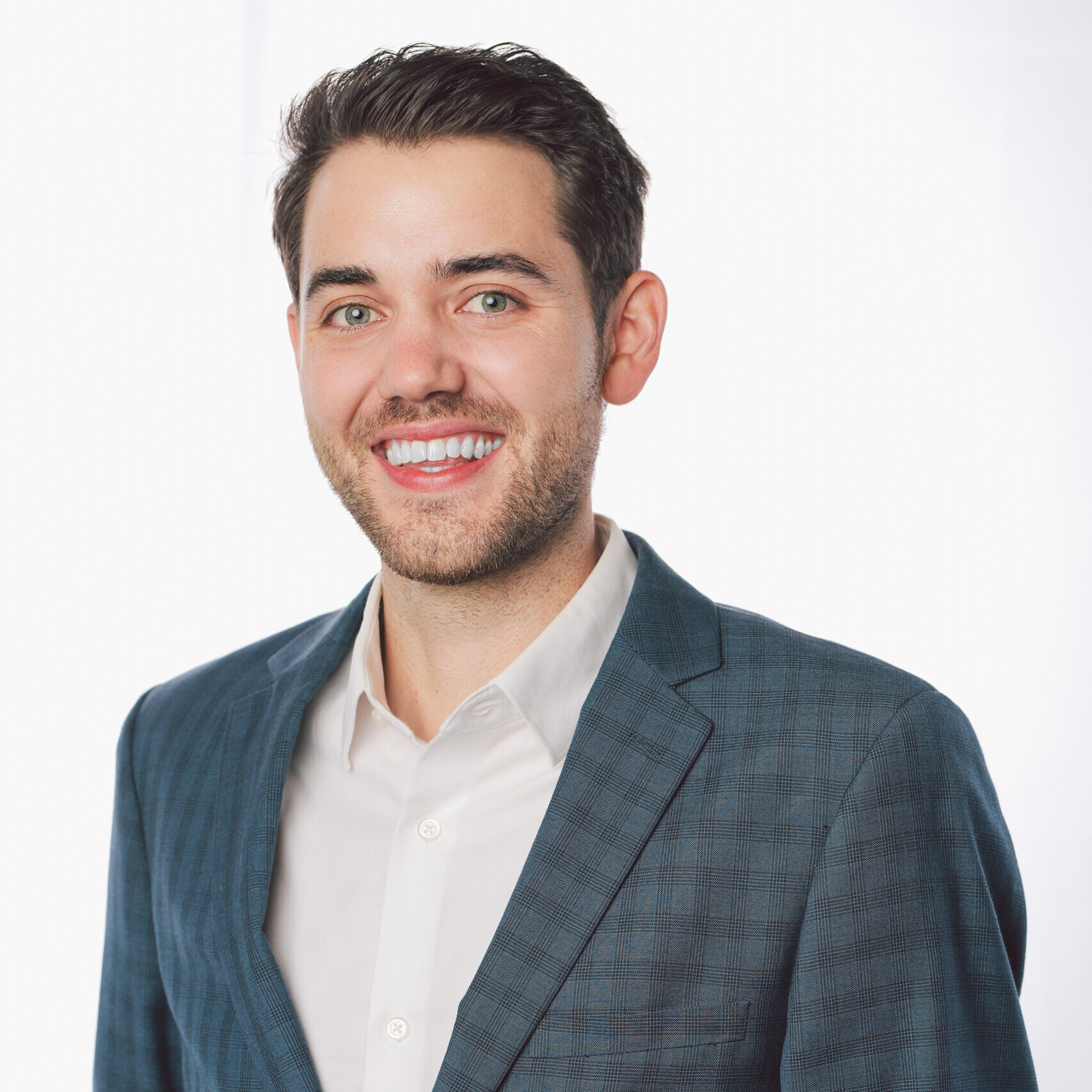
Mason Pashia



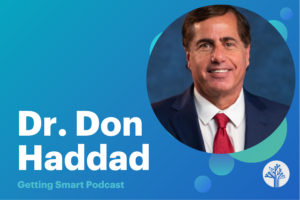
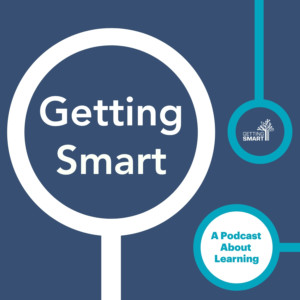

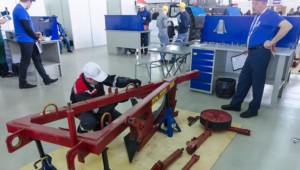
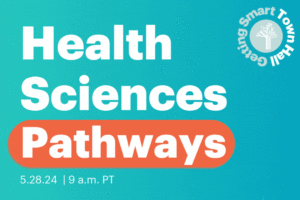

0 Comments
Leave a Comment
Your email address will not be published. All fields are required.